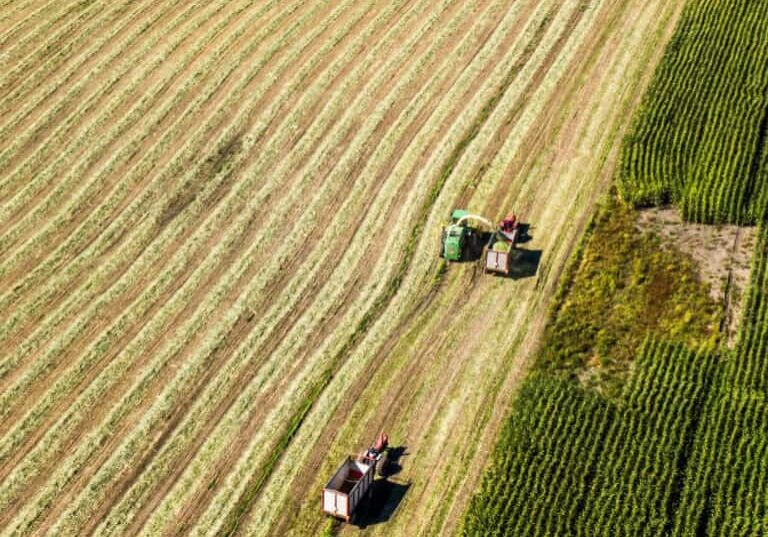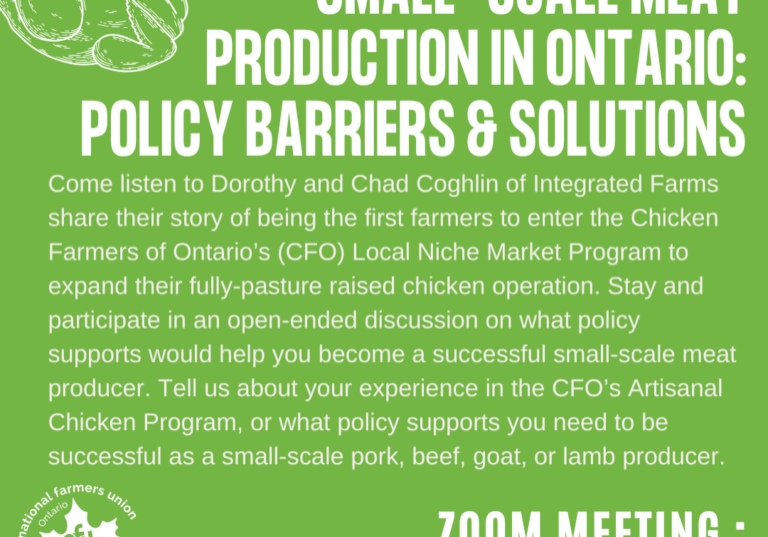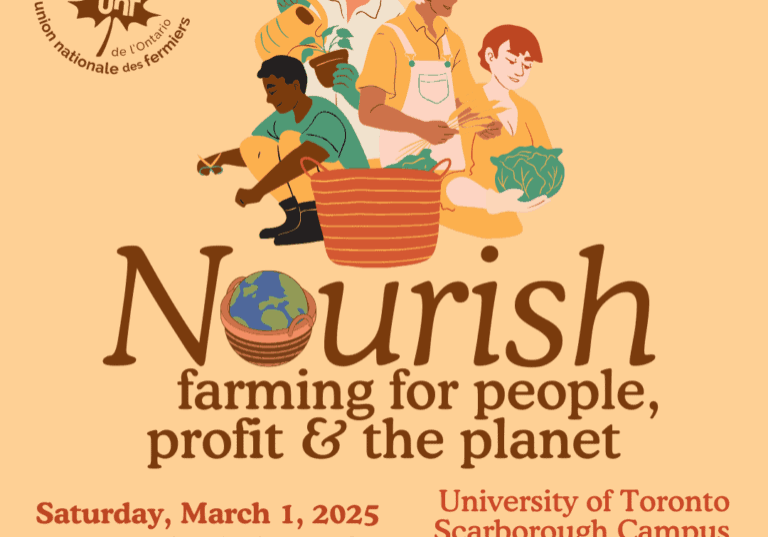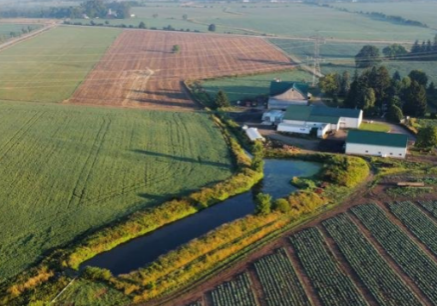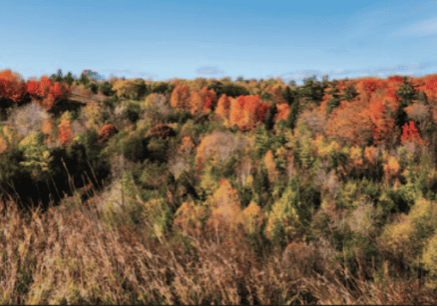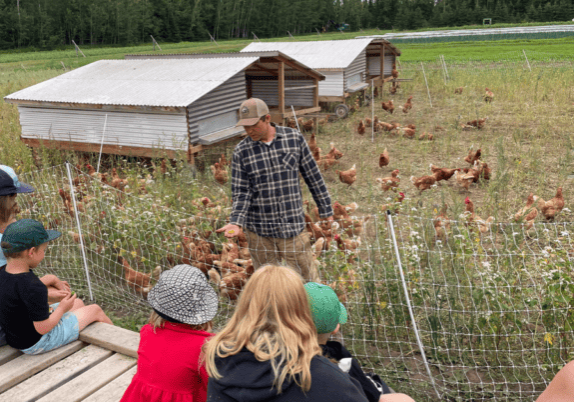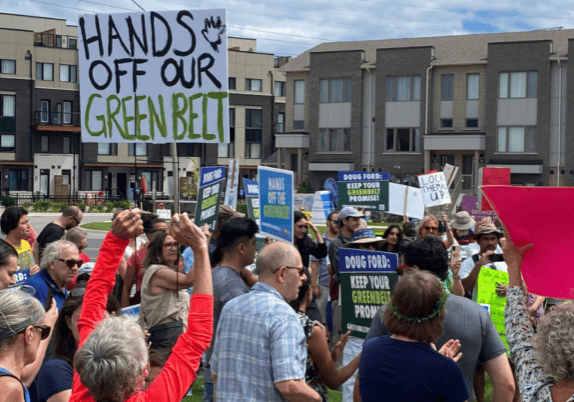National Farmers Union – Ontario Votes 2025

Unsure who to vote for? Are you curious where the parties and your local candidates stand on issues of importance to farmers?
Many National Farmers Union – Ontario (NFU-O) members are actively involved in raising awareness of agricultural issues during this election and we encourage you to do the same.
In Wilmot Township, NFU-O members have helped make the expropriation of 770 acres of farmland for industrial development an electoral issue: to date, the sitting Progressive Conservative Party of Ontario has stated their support for Waterloo region’s farmland grab, the Ontario Liberal Party has promised a restart on the “land assembly,” the Ontario NDP has demanded full transparency and accountability, and the Green Party of Ontario has called on the permanent protection of prime farmland in Wilmot Township and across the province.
Elsewhere, NFU-O members are actual candidates in this provincial election! In Renfrew-Nipissing-Pembroke, NFU-O Local 330 President, Marshall Buchanan received the NDP nomination and is actively campaigning to revitalize rural communities, improve health care services, and strengthen environmental protections. Matthew Van Ankum, NFU-O Local 335 President, is running as the Green Party candidate and is championing farmland protection, sustainability, and electoral reform. Go Marshall and Matthew!
To help you make an informed vote when you head to the polls on February 27th, and to assist you in asking key agricultural and food system questions, we encourage you to draw upon Sustain Ontario’s excellent engagement tools.
The NFU-O has also prepared a few key questions across several themes that you might ask your local candidates. Let’s bring agricultural and food issues to the forefront this election!
1. Strengthening Ontario’s Local Food System
In light of Trump’s threatened tariffs, what will your party do to support furthering the mandate of Ontario’s Local Food Act, 2013 to ensure Ontarians have access to food grown by and for Ontario’s farmers?
- Speaking points:
-
- Limited access to distribution and processing infrastructure hinders farmers ability to enter and thrive in regional markets.
- The total number of provincially licensed abattoirs has dropped from 300 in 1995 to only 117 in 2025.
- The Ontario Local Food Act (2013) was designed to foster successful and resilient local food economies by encouraging the development of new markets for local food and increasing consumer awareness of local food in Ontario. In the 12 years since the Act came into effect, the Ontario government has habitually violated the tenets of the Local Food Act through inaction, complacency, and regulatory circumvention. The results of which has farmers today witnessing a continual loss of prime farmland, the rise of land prices beyond the productive capacity of farmland, and trade policy that continues to favour large agribusinesses rather than small and mid-sized family farms.
- What we’d like to see:
-
- Increased public investment in distribution and production infrastructure for small and mid-scale agricultural and food processing enterprises, including support for more provincially licensed abattoirs.
- Proposals that advance the purposes of the Local Food Act and that address tariff threats via public investments in local food economies and systems as well as the development of new markets for local food.
2. Addressing Interprovincial Trade Barriers
Does your party believe it is necessary to address interprovincial trade barriers and, if so, how will the reduction of these barriers benefit farmers and local food production?
- Speaking points:
- Framing regulation as a trade barrier is often an attempt to make deregulation more politically acceptable, even when it is not in the public interest.
- Reducing regulations may lead to food safety issues and increased corporate control of our food system.
- Because of the extreme shortage of provincially licensed abattoirs some meat producers are in closer proximity to non-Ontario abattoirs but are unable to sell their products in Ontario if they have their animals processed outside of the province.
- What we’d like to see:
-
- A commitment to not deregulate interprovincial trade unless it can be proven to support local food production and consumption without undermining the health and safety of food produced.
- Increase the number of provincially licensed abattoirs.
- Until the province increases the quantity of provincially licensed abattoirs, allow for small and medium scale meat producers to sell the meat processed at an out-of-province abattoir to Ontario consumers.
3. Solving the Farmland Succession Crisis
What measures are your party prepared to enact to ensure affordable access and ownership of farmland for the next generation of food producers?
- Speaking points:
-
- The average age of a farmer in Canada is 57 years old and, according to Statistics Canada, less than 10% of farmers have a succession plan in place, preventing the continuance of many viable farm businesses. Meanwhile farmland prices, particularly in southwestern Ontario, pose significant economic barriers to new & young farmers. Economic barriers are exacerbated for people based on their gender, race, religion, etc. Government policies, or lack thereof, have not assisted either succession-planners or new & young farmers seeking land. Without real public policy, the government-fueled trend to larger farm operations, as well as farmland being purchased by non-farm speculative sources, is a threat to Canadian food sovereignty, especially in light of Trump’s tariff threats.
- What we’d like to see:
-
- The province conduct an inventory of public lands with soil suitable for agricultural production as well as funding to support the expansion of public land lease programs for diversified agriculture in target areas across the province.
- A provincially-funded land-matching program to provide stable funding non-familial land transfers from aging farmers to new, young, and equity-deserving farmers, including a specific stream for Indigenous communities to support land rematriation.
- Develop a Land Access Policy Incentive (LAPI) program to ensure farmland is transferred into the hands of diversified farmers; a LAPI program would include long-term micro-loans, an equity-deserving farmer grant stream, a beginning farmer tax credit program, and capital gains incentives for selling to diversified farmers.
4. Expanding and Strengthening Farmland Protection
What is your party’s plan to protect farmland, effectively end urban sprawl (including the building of more highways), rejuvenate existing communities, and protect forest, water, and farmland in Ontario?
- Speaking Points:
-
- Urban sprawl, fueled by non-farm speculative acquisition, presents a clear threat to the protection of prime agricultural farmland. The NFU-O is a strong proponent of an approach that would see the implementation of firm urban boundaries that direct all urban growth inward, with emphasis placed on the permanent protection of farmland for agriculture. Environmental protection and food sovereignty, not developer driven growth, should be the defining driving force. Rather than removing “red tape” to spur development, substantive community consultation is required.
- From 2016 to 2021, the total acreage of productive land in Ontario decreased from 12,348,463 to 11,766,071, increasing the rate of loss to approximately 319 acres per day (Statistics Canada, 2022)
- The revised Provincial Planning Statement, 2024 has significantly curtailed meaningful protection against the loss of agricultural land in the province.
- Loss of productive land reduces land access options for new entrants, harms rural communities and is a threat to local food supply through the fragmentation of farming communities, loss of employment, and loss of local and farm/harvest-related businesses and services.
- What we’d like to see:
-
- Reverse changes to the Provincial Planning Statement that encourage sprawl and weaken farmland and natural heritage protection.
- Cancel the proposed Highway 413 and Bradford Bypass.
- Protect, strengthen, and expand the Greenbelt.
- The introduction of land grabbing prevention legislation to regulate the purchase of farmland by non-farming entities as this typically leads to its removal from agricultural production.
5. Ending Intimate Partner & Gender-Based Violence
What action will you and your party take to follow the lead of 97 Ontario municipalities, including the City of Stratford, the Government of Canada and provinces such as Nova Scotia and British Columbia, to declare Intimate Partner Violence/Gender Based Violence (IPV/GBV) an epidemic in Ontario?
- Speaking Points:
-
- At the NFU-O AGM in 2024, the membership passed a resolution declaring Intimate Partner Violence as an epidemic in Ontario and urging the Province of Ontario to declare the same.
- In 2022, the reported rate of IPV against women in rural Ontario was 598/100,000 versus 378/100,000 in urban Ontario.
- What we’d like to see:
-
- The province declare Intimate Partner Violence/Gender Based Violence an epidemic in Ontario.
- Increased public resources and support for crisis centres, shelters, and other non-profit entities dedicated to the eradication of IPV and GBV, especially in rural areas that have been traditionally underserved.
